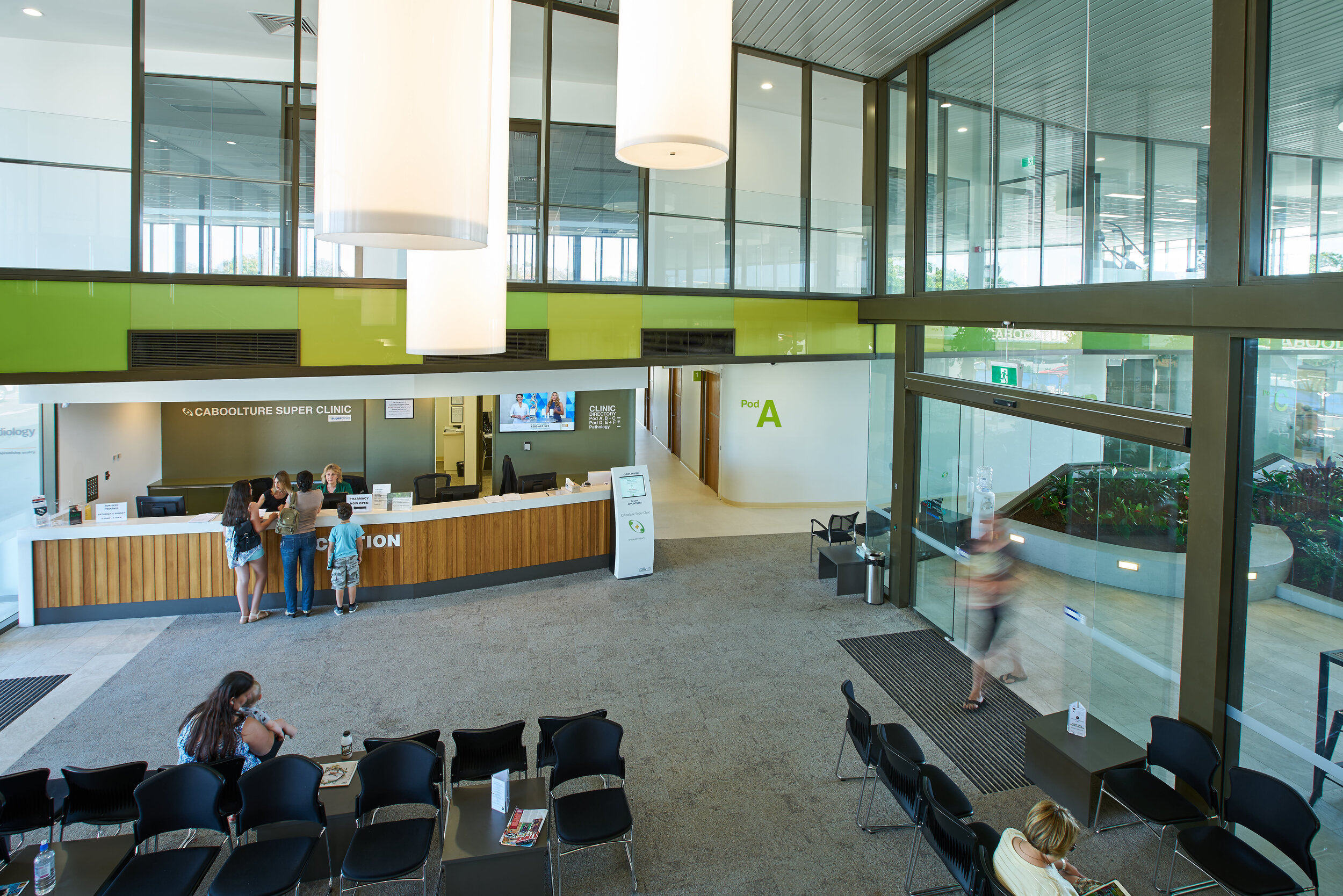Caboolture Super Clinic
Caboolture, Queensland
Healing environment principles are informing design across the health and aged care sectors. One of the principles is increased access to nature and landscape to benefit the wellbeing of patients, staff and visitors.
Landscape architecture draws the critical wellbeing aspect of greenery into spaces that are traditionally clinical and harsh. Architects and landscape architects are now working closely to design spaces that promote wellbeing, social opportunities and physical activity.
The Caboolture Super Clinic program addresses the healthcare needs and priorities of the local community. The Caboolture Super Clinic’s brief was to provide an easy-to-navigate, functional facility that supports wellbeing. It supports a range of allied health care spaces with 24 consult rooms and acute care unit.
Wilson Architects design approach focuses on the experience of the occupants and visitors using a Salutogenic approach – a method coined by professor of medical sociology, Aaron Antonovsky. This approach promotes wellbeing in healthcare, and focuses on factors that support human health, rather than on factors that cause disease.
Unlike institutional designs traditionally employed by clinics, the facility features vertical gardens, fish ponds and an atrium to foster a feeling of healing and respite. The clinic surrounds a courtyard, which is designed as a landscaped break-out space, and as an organising element for way-finding and orientation. All waiting and circulation spaces present views of the courtyard, offering an outlook to nature, light and activity.
The facility is conceived for human interaction, promoting concepts of health and wellbeing, as well as de-institutionalising what are often seen as clinical and alienating places. A café attracts local residents, cyclists and others to enjoy the landscaped atrium spaces. The green spaces work to reduce energy consumption, improve air quality and assist with stormwater management. Meanwhile, the landscaping, ponds and café give staff a much-needed refuge from the stress of clinical work.
Utilising ground plants, trees and shrubs moving through internal and external spaces creates a sustainable, ecological order. Healing environments ensure everyone feels welcome, including children. The clinic’s curved seating opposite the cubby play spaces were designed specifically for parents and children waiting for paediatric consults, which usually involve immunisations. The play and waiting spaces are separated from the main waiting areas to allow kids to explore, engage in play and be distracted from the clinical nature of their visit.
The cubby houses are clad in an American Oak timber veneer, while their interiors are lined with a flexible floor vinyl. These materials conform to the abstract curved shapes, and create lounging spaces designed to capture the imagination of young children.
“When a building makes you feel this good you just know that at the very beginning, someone stood here and considered all of the factors – light, space, breezes, ergonomics, and most importantly, how it was going to be used.”
– Fiona Heckelman, Caboolture local.
”There’s a very strong link between feeling good, and being well. The focus [at our Super Clinic] is on being well and staying well- we’re focused on the system of the wellness concept.”
- Dr David Hooper Caboolture GP Super Clinic Executive Director
Completed
2015
Size
3,200sqm
Project Value
$8,200,000
Key Personnel
Hamilton Wilson, Brent Hardcastle, Luke Gavioli, Michael Ford, Nick Lorenz, Phillip Lukin, Rachael Mellick, Sophie Lorenz, John Harrison
Awards
2019 QLD Architecture Awards - Brisbane Regional Commendation (Public Architecture)
Photographer
Alex Chomicz







